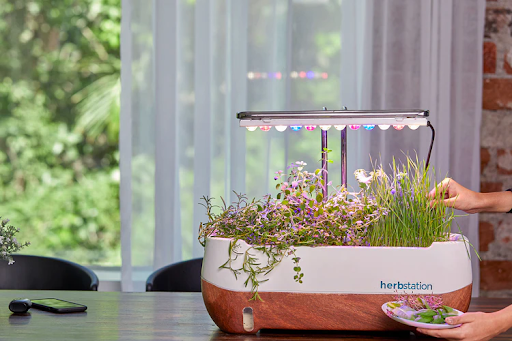
 Loading... Please wait...
Loading... Please wait...Save Money. Grow Your Own!
Fast Plain Box Shipping.
We ship to the US & Canada.
Posted on 14th Sep 2021
Do you know it is possible to cancel your regular trips to the local grocery store? What you need is a home garden through which you can have all your vegetables. Having limited outdoor space will surely not make this mission impossible. Have no worries as your indoors can do the job for you perfectly well.

There is a growing trend of indoor gardens, which is showing promising results. What is important is remembering the basics in agriculture, such as warmth, water, air circulation, and quality soil. With availing the right optimal conditions, the indoors vegetables will grow the same as in a field. Employing high-tech equipment will make things even more fruitful. Which are some of the best tips to stick to when growing vegetables indoors?
Consider paying close attention to the moisture content of the soil. This is where you avoid any form of over-watering. These indoor plants can survive better in less moisture since the evaporation rates are low. Have a controlled way of watering the plants such that you will not make the growing medium or soil too wet.
With too much water, you reduce the aeration in the soil, which harms its suitability to the plants' growth. This kills the beneficial microorganisms in the soil as well, which means with time, the soil may need replacement.
Every plant will need sufficient light for it to manufacture food through photosynthesis; what you need to understand is the light requirements for your different plants. Consulting with the agricultural experts will enlighten you on the light intensity and duration (exposure) to work with. It helps in making the vegetables grow strong and healthy.
The position of your crops matters a lot to their ability to harness sunlight. Having them near large windows is a good idea. If you can allocate them a section near your clear balcony area, it will help in maximum light absorption. Some people are more creative whereby they fit some clear sky window at the chamber such that the plans will absorb the sunlight just like when in the field.
This is an advanced version of the hydroponic gardens. They are more beneficial due to their portability as compared to the typical fixed hydroponic garden setups. This means you will not feel limited to the positions of the growing points within your house. Gathering a lot of information is critical in having an easy time utilizing them in indoor gardening. It is, therefore, significant to find online Aerogarden review guides. The equipment comes typically in different sizes but mostly is standard-sized to allow better portability. They are simple to use, making them convenient even when doing indoor farming for the first time.
The kits have a unique way of making the seed germinates fast. The pre-seeded growing containers allow the plants to absorb the nutrients and water in the right proportions. There is also proper regulation of the oxygen which helps healthy root development. The sprouting seeds will therefore be vital.
Just like humans, the air is critical for the thriving of plants. Therefore, find every method you can in ensuring that the air quality is at the topmost level. It aids the vegetables in taking in the right amounts of carbon dioxide, which they need in photosynthesis. Make the house section have a proper flow of air. Having some fans can be a great idea. Also, be keen on the condensation at the leaves, as this will block the stomata. Remember to deal with dust efficiently.
The warmth in which the crops are growing has a significant influence on how healthy they will be. Majoring of the houseplants will need a temperature range of between 65 to 75 Fahrenheit (during the day) and ten degrees lower for the nights. Research on the optimal growing conditions of the specific type of plant which you have. There is a close relationship between temperatures and humidity; hence remember to make the two go together.

Healthy vegetables need a sufficient supply of nutrients. As you focus on the macronutrients such as potassium, nitrogen, and phosphorus, remember the micronutrients as well. It makes the yields more. For the leafy plants, ensure that you give them enough nitrogenous fertilizers as they need them. Working close with experts is beneficial.
Indoor gardening is a trend that is increasing in the modern world. This helps a lot, especially where there is limited outdoor space. However, just like any other farming practice, you need to follow the right path. Employing modern technology in your work can make things more seamless and well-controlled. The essential thing is ensuring that the vegetables are growing in the right conditions.